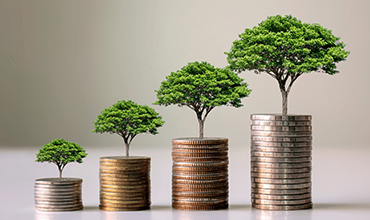
According to the latest financing for Sustainable Development Report, the world has seen some positive developments as far as green energy finance is concerned. However, other areas such as climate adaptation, sustainable consumption and production, biodiversity and ecosystems integrity, and pollution abatement need attention. The need for realizing sustainable development goals, and addressing threats of climate change, biodiversity loss, and other environmental degradation requires urgent actions, concrete, coherent, and systematic planning approaches strengthened institutions and budgets. Environmental sustainability needs to be advanced through integration of environmental SDGs through green budgeting and environment-responsive fiscal policies. Green budgeting is a tool involving of budgetary planning than can help in systematic mapping and tracking the sources of funds, outlays, expenditures, and policies. This, in turn, can support coordinated policy designs and identification of periodic and continuous finance needs for achieving green objectives, that is, those relating to the climate and environmental dimensions (TERI 2022a). Green budgeting would need to be supplemented with other sources of financing as outlined in the Addis Agenda.
Recent developments at COP27 including on the loss and damage fund, LT-LEDS, lack of progress on long-term goal for climate finance, private sector commitments etc- within the context of criticality of climate finance from public and private sources- both domestically and internationally. The First Needs Determination Report of developing country Parties, analysed NDCs from 153 Parties (until 31st May 2021) and identified 4,274 needs – out of which only 1,782 needs (~42 %) were costed. The costed needs cumulatively amounted to USD 5.8–5.9 trillion considering the timeframe of 2030. Even for the USD 100 billion commitment, according to OECD, the total climate finance provided and mobilised by developed countries amounted to USD 83.3 billion in 2020 (OECD 2022). Of this 82% came from public finance, 16% came from private finance and 2% came in the form of export credits. The issue of defining climate finance as well as accounting methods is an issue which needs to be resolved (TERI 2022b). According to World Bank, five key systems of energy; agriculture, food, water, and land; cities; transport; and manufacturing produce over 90 percent of global GHG emissions but also face significant adaptation challenges (World Bank 2021). Developing countries have emphasized on bridging the financing gap between mitigation and adaptation actions. According to OECD (2022), out of USD 83.3 billion, USD 48.6 billion (58%) was for mitigation, USD 28.6 billion (34%) was for adaptation and USD 6 billion (7%) was for cross-cutting activities. Questions around barriers towards scalable financing for adaptation and resilience are the need of the hour.
The above background makes it amply clear that current financial mechanisms are inadequate in terms of responding to the needs of the most vulnerable while paying attention to pressing needs such as climate adaptation, ecosystem integrity, waste management and pollution abatement. This is also the basis of climate finance as being one of the pillars in the proposed Green Development Pact outcome of the G20, under India’s G20 Presidency.
[1] What the role of multilateral organizations to advance the Addis Agenda global framework for financing sustainable development to support the implementation of the 2030 Agenda, including the SDGs? What is the role of multilaterals, private sector, and innovative instruments such as guarantees, insurance, blended finance facilities?
[2] How can sustainable development be integrated in annual processes such as budget making, through tools such as green budgeting?
[3] How can institutions respond to bridge the financing gap between climate adaptation and climate mitigation?
[4] The five pillars of the Green Development Pact, under India’s G20 Presidency, are envisaged to include: Lifestyle of Environment (LiFE), Circular Economy, Climate Finance, Accelerating Progress on SDGs, and Energy Transitions & Energy Security. What are your proposals related to climate finance for the G20 Leadership and for the proposed Green Development Pact?
The session will involve a chaired/ moderated discussion, which will start with brief remarks by the chair/ moderator followed by brief addresses/ statements by the speakers. After the addresses, depending on the remaining time, the chair will pose 1–2 questions to the esteemed speakers based on issues emerging from the addresses. The chair/ moderator will then sum up the discussions. The total length of the panel discussion is 60 minutes. The addresses should be in the form of verbal interventions only. The WSDS Secretariat requests speakers to avoid using power point presentations. Strict time management is to be followed, for which there will be a timer/ buzzer.
OECD (Organisation for Economic Co-operation and Development). (2022). Aggregate Trends of Climate Finance Provided and Mobilised by Developed Countries in 2013-2020, Climate Finance and the USD 100 Billion Goal. Paris: OECD Publishing.
TERI (The Energy and Resources Institute). (2022a). Green Budgeting Portal. New Delhi: The Energy and Resources Institute. URL: https://greenbudgeting.teriin.org/
TERI (The Energy and Resources Institute). (2022b). Road to Sharm el-Sheikh: Towards Equity and Climate Justice. COP27 Compass, Act4Earth and World Sustainable Development Summit. New Delhi: The Energy and Resources Institute.
UN (United Nations) (2022). 2022 Financing for Sustainable Development Report. New York: United Nations.
UNFCCC (United Nations Framework Convention on Climate Change). (2021). First report on the determination of the needs of developing country Parties related to implementing the Convention and the Paris Agreement. Bonn: Standing Committee on Finance, United Nations Framework Convention on Climate Change.
World Bank (2021), Climate Change Action Plan 2021-2025, Washington DC: The World Bank Group.
Centre for Sustainable
Development Research and Leadership,
The Energy & Resources Institute
6C, Darbari Seth Block, India Habitat Centre, Lodhi Road
New Delhi - 110 003 India
wsds@teri.res.in
+91 11 24682100 (Ext. : 2464)